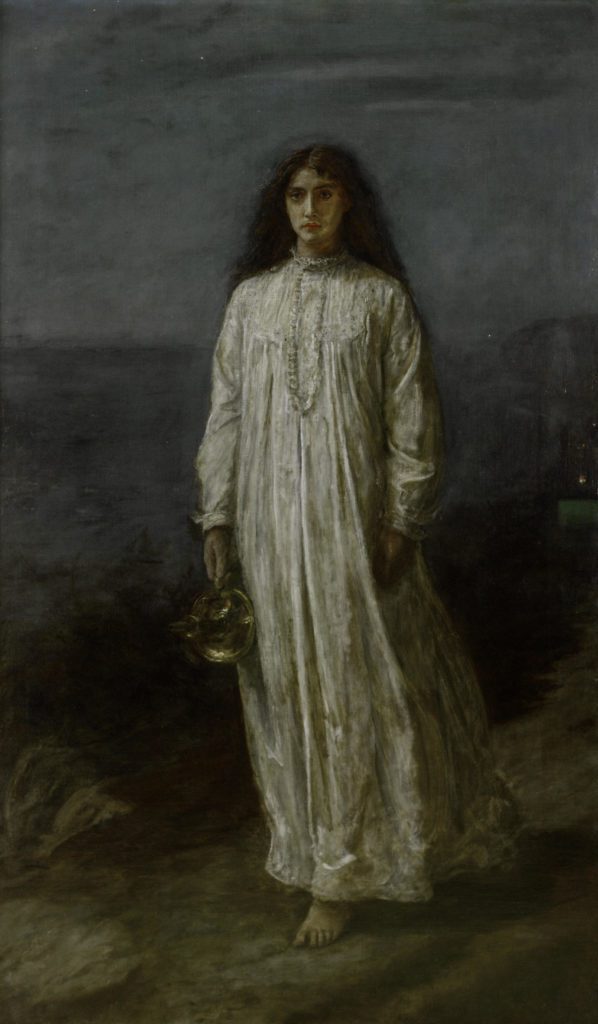Firstly let me say that the genre of the Victorian novel is safe. As anyone who reads my blog has probably noticed, I have a particular penchant for books about ghosts, Victorian England, a country house and a secret. I can’t get enough, it seems. And this one often reminded me of Gaslight.
It’s told from the point-of-view of 17-year old Phoebe Turner. It is 1881 and her beloved aunt Cissy is an esteemed opera singer. Phoebe’s mother is a Bible-thumping missionary. The two sisters could not be more different. One night, Phoebe is allowed to attend one of her aunt’s performances at Wilton’s Music Hall, and in a moment she is swept up in the footlights and greasepaint. Despite her mother’s warning against “theatre people”, she also sees the camaraderie among the backstage family. That is until a strange man oozes his way into her family’s life — and turns it on its head.

Trapped by a family secret, Phoebe finds herself accepting a position as a companion to a Mrs. Samuels. She leaves all she has known in London for an estate in Herefordshire. Here she finds a graveyard, madness, and answers to questions she didn’t know to ask. She discovers treachery and deception that leads back to her own existence.
The Somnambulist relies on many of the conventions of a Victorian novel. Setting certainly plays a huge role, as do the numerous letters sent between the characters. Family secrets and missing objects are also a common theme. Essie Fox brings the genre into the modern era by including an added layer of salaciousness (For all their popular novelty, Victorian novels maintained a certain level of propriety by being less explicit). Here, certain scenes resemble Joyce Carol Oates more than Wilkie Collins. This novel does not pull any punches, which makes it all the more compelling.

Throughout the book, the idea of sleepwalking is prevalent. The theme varies from the most literal to far more figurative suggestions of consciousness. Who are we when we sleep? What is reality, and what is a dream, and how does one affect the other? How much of our wakeful lives do we spend “sleepwalking”, just to get through the day? Is the line between life and death like the line between wakefulness and sleep? What is real and what is superstition? While the house is in mourning, Phoebe describes the parlor:
Except for the wheezing old organ in church, there was to be no music that day. Cissy’s piano was draped in black velvet, the same with the mirrors that hung over the mantels; the same with the big marble clock. On the day of the death, when she wound that down, it felt like another heart being stopped. But nature abhors a vacuum, and little wonder the ghosts of the past took hold of that silence to creep inside, bringing with them the nets in which we would be trapped. ~Pg. 66
I truly enjoyed reading this book and seeing yet another take on the Victorian novel. It’s great for a long weekend or a couple of afternoons in the backyard hammock. I look forward to reading more by Ms. Fox.
In this case, I had to do a little detective work to get my hands on a copy. It does not yet have a US publisher, but hopefully that will change soon. Until then, you can purchase it from The Book Depository, who offers free shipping worldwide. A great many thanks to the folks at Orion Books UK for sending me a copy.
_____________________________
384 pages
234mm x 153mm x 32mm
ISBN-13 Number: 9781409123316
Publication Date: May 2011


Yeah, me too. I think it would do well over here. Of course, I’m a total Anglophile….
WOW! This sounds really good. I think the sleep theme would appeal to me. I hope it gets a US release soon ::fingers crossed::